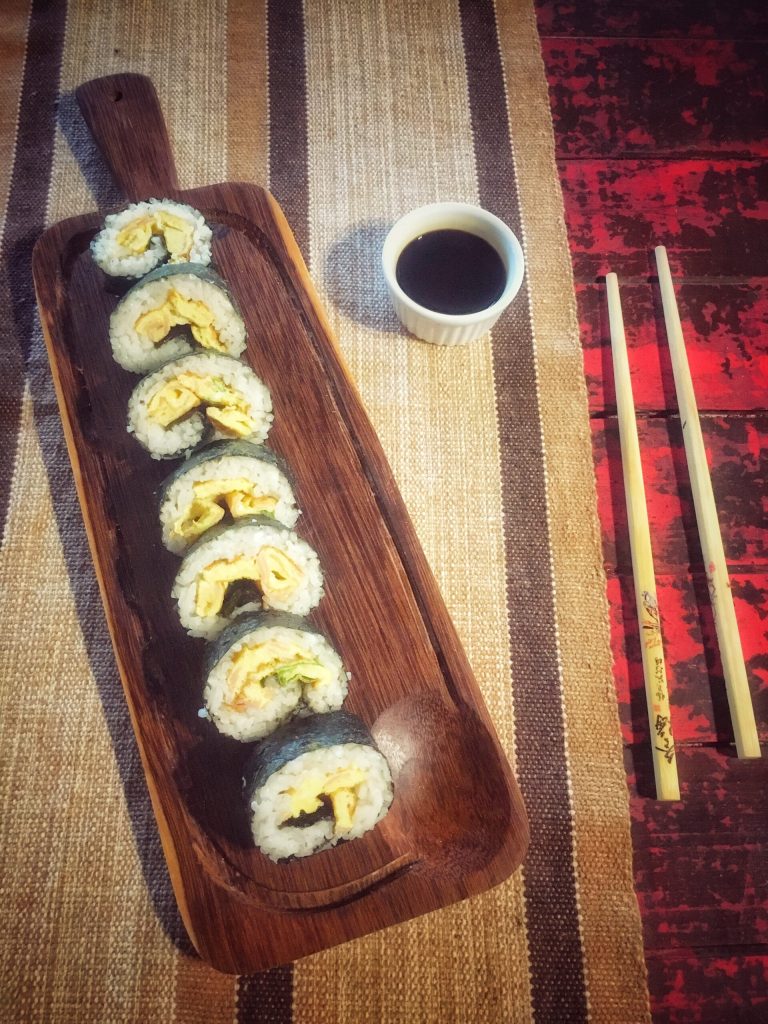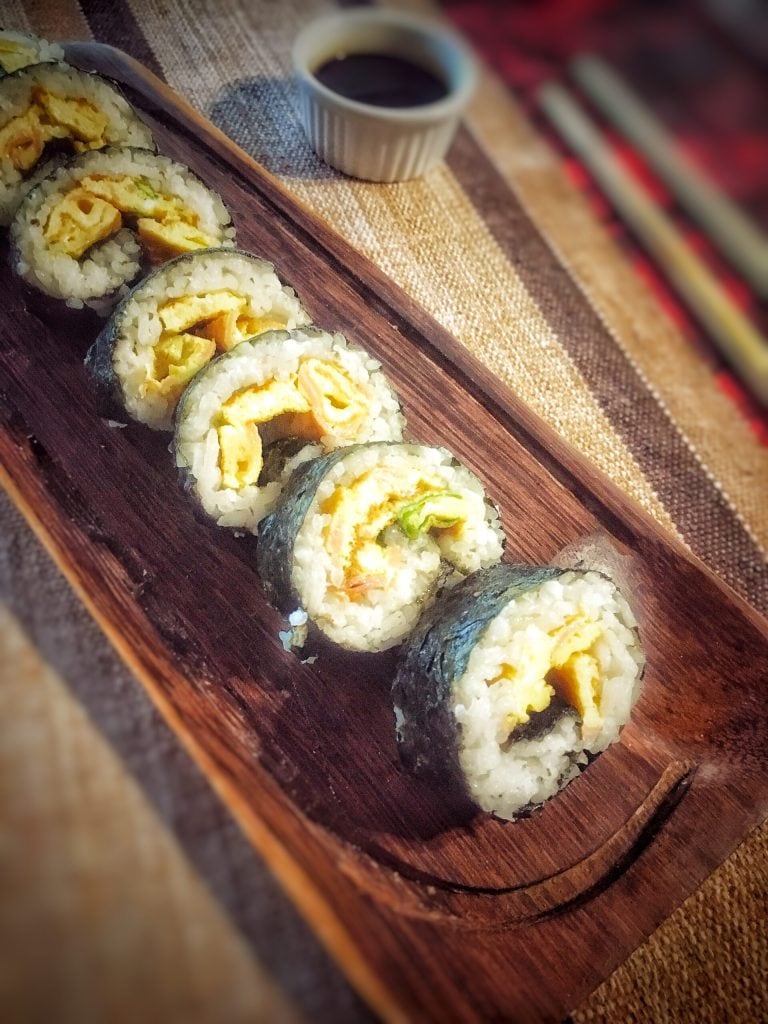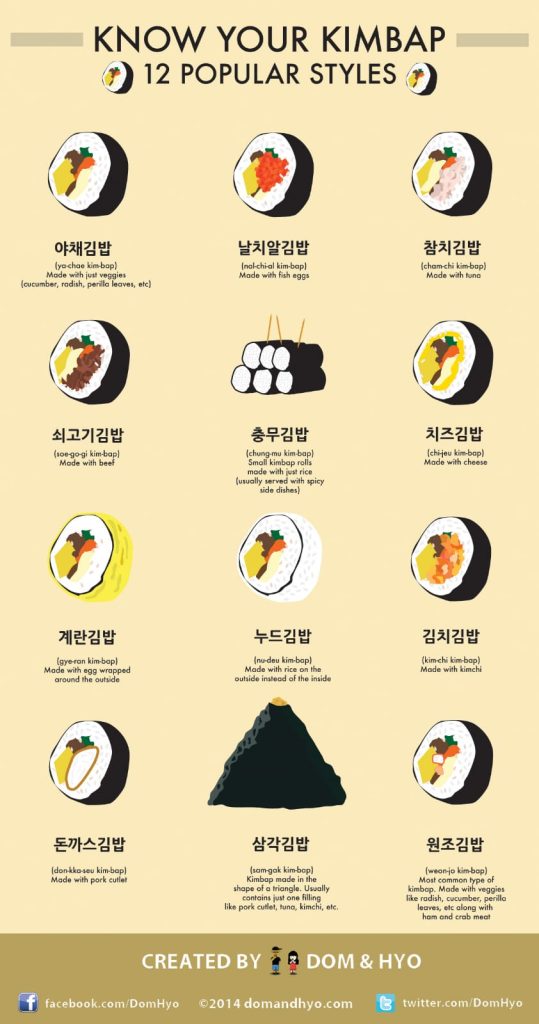The Gye-ran Kimbap come from Korea and are rolls made with gohan rice, nori seaweed, and omelet with ham and scallions.
But please, don’t call them sushi!
There are indeed 2 differences:
1️⃣ sesame oil is added to the rice, not rice vinegar
2️⃣ the different fillings never include raw fish
김밥 Kimbap means: KIM is seaweed in Korean, and BAP is rice.
Traditionally, it is prepared by mothers and brought by their children as a snack.
The dish is often part of a lunch box (dosirak) to be consumed during picnics and outdoor events and can serve as a light lunch along with danmuji (yellow pickled radish) and kimchi.
It seems to derive from a traditional Japanese dish imported into Korean lands during the Japanese occupation.
Due to this (1910-1945), it was referred to by the Japanese name “norimaki“: among the many restrictions imposed by the Japanese in Korea was the prohibition of using the Korean language.
As mentioned, there are many types (see photo below) this is: Gye-ran Kimbap, which can be made with the omelet covering the seaweed externally or, as in this case, with the omelet as a filling.

- Difficulty: Medium
- Cost: Cheap
- Preparation time: 20 Minutes
- Portions: 18/20 pieces
- Cooking methods: Stove
- Cuisine: Korean
Ingredients
- 1 cup rice
- 2 tablespoons sesame oil
- to taste sesame seeds
- 2 eggs
- 3.5 oz cooked ham
- to taste chives
- 2 cloves garlic (optional, if desired)
- to taste salt
- 4 nori seaweed
Steps
First of all, prepare the gohan rice, which is oriental steamed rice.
You can find the recipe HERE.
Then season it with sesame oil, sesame seeds, and a pinch of salt.Prepare the omelets (or the omelet if you use a large pan) as thin as possible with eggs, ham, chives, and garlic if desired.
Cut the nori seaweed into strips about 1.5 inches wide, remembering to place the shiny side out.
Moisten your hands with a mix of water and rice vinegar and spread part of the rice over the seaweed, spreading it with the help of your hands.
Cut the omelets into strips and place two strips only in the center and then roll up.

The different types of kimbap, here are the most popular:

I accompanied them with soy sauce, but you can also choose ready-made kimchi.

